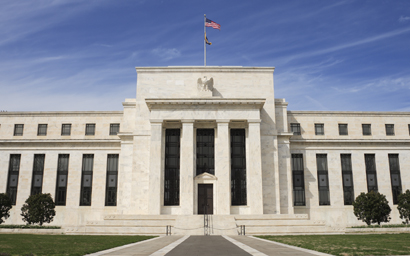The US Federal Reserve presented a dovish tone after its latest meeting, giving no sign the long-anticipated interest rate rise will happen soon.
Although the word “patient” was removed from the statement on monetary policy, Federal Reserve chair Janet Yellen said this “doesn’t mean we are going to be impatient”, stressing the timing of an increase in the target range for the federal funds rate remained undecided.
The Fed also acknowledged that economic growth has moderated and inflation has declined, but said lower energy prices continue to support household spending. While the committee expects the labour market to gradually improve and inflation to move back towards 2%, it also says economic conditions may require rates to stay below normal for some time to come.
Anna Stupnytska, global economist at Fidelity Worldwide Investment, says the Fed’s choice to lower the long-term unemployment rate projection is significant, implying labour market slack remains. “This in turn means that inflation and wage growth – and hence rates – can stay lower for longer,” she says.
She adds that unemployment, wage growth and core inflation are the three indicators to watch out for in coming months, as a turnaround in these factors could spur the first hike.
Nick Gartside, chief investment officer, fixed income, JP Morgan Asset Management says the announcements marked “the beginning of the end” for such a low federal funds rate.
He also highlights the Fed’s reference to “international developments”, saying this comment “is a veiled reference to ECB [European Central Bank] activity and the strengthening dollar”, which have had a subsequent negative impact on exports.
Gartside predicts two rate hikes in 2015, in September and December, followed by four more rate hikes in 2016 to 1.75% by year-end.
Rick Rieder, chief investment officer of fundamental fixed income at BlackRock, says the Fed policy statement set the stage for interest rate normalisation this year, but the pace will be moderate.
He highlights the Fed’s focus on data and says changes abroad, such as the ECB’s quantitative easing, have allowed the Fed “a window of opportunity to move”.
He recommends that investors look past near-term volatility and focus on longer term developments, such as demographic changes and development in technologies.
Fredrik Skoglund, analyst at Nordic corporate bank SEB, focuses on the effect of the Fed’s announcement on emerging market currencies.
He says the dovish rhetoric puts markets in a “risk-on mode”, giving most assets a boost.
“Emerging market currencies are especially well placed to benefit from the increased risk sentiment as most have had a weak performance this year,” he says.
©2015 funds europe





